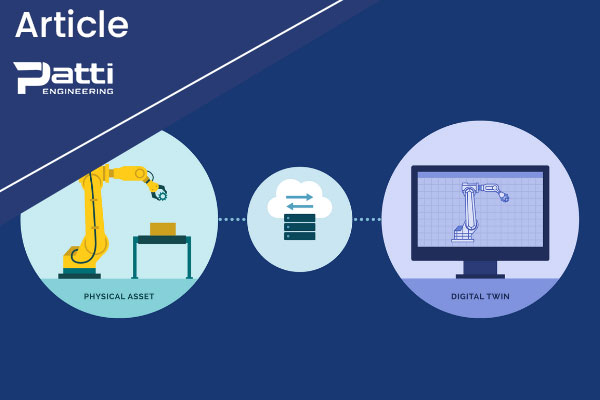
Should You Use Digital Twins?
Practical Application of Digital Twin Technology
You may have heard about digital twins and wondered if they could be useful in your plant or manufacturing operation. In this article, we’ll offer practical application examples of digital twins and explain how this technology can reduce time, effort, and risk.
First, we’ll start by defining digital twin technology.
What Is a Digital Twin?
A digital twin is an exact, digital replication of a real-world product, system, or process. However, unlike a simulation, a digital twin replicates physical parameters, behavior, and function of a real-world system. This makes digital twins extremely useful for design and development, startup and commissioning, testing changes or upgrades, and troubleshooting.
What Does This Mean for Manufacturers?
Why should you use a digital twin when you’re creating, modifying, or analyzing a product or process? As previously mentioned, digital twin technology allows you to mimic real-world function and behavior. This means that when you’re running a scenario, you can get same outcome or behavior that the real-world system would exhibit. And, you can do all of that without creating or making changes to the physical system itself.
When the design or modification is nailed down, you can implement it without the uncertainties, troubleshooting, and rework time.
Using Digital Twins During the Development Process
During product or process development, digital twins can be indispensable for optimizing the product design or process flow. Using this technology, designers can test blueprints to determine which one best meets the criteria for fit, form, and function. This testing capability ensures that there are minimal last-minute changes during production or implementation.
Digital Twins Can Help Reduce Errors During the Commissioning Phase
Similarly, a digital twin can simulate the function of a manufacturing or processing operation. This makes startup and commissioning – areas that often rife with trial-and-error – a much smoother process. Even for complex motion controls or multi-step processes, you could program digital twins to exactly simulate the behavior of the system.
Additionally, a digital twin can find and address certain issues (e.g. a planned motion sequence resulting in too much vibration). Then, when it’s time to commission the system, parameters such as timing and flow are nailed down and don’t have to be dialed-in on the floor.
Digital Twins Make Product & Process Testing Easier
You can also use an accurate, up-to-date digital twin to test product and process modifications. For example, if you increase process throughput, can the upstream and downstream operations keep up? Or, if you change a product’s dimensions, can the existing assembly process accommodate the new dimensions while maintaining the same throughput?
Determining these interrelationships through real-world trial-and-error would cause a significant disruption to manufacturing. But, with digital twins, these variables (and the numerous scenarios they create) can be worked out virtually, based on real-world data and behaviors.
Implementing Digital Twin Technology
Implementing digital twins does require some upfront work. But, using tools like Siemens Tecnomatix Plant Simulation and Process Simulation platforms can minimize the manual, hands-on work. These tools can gather data from various sources and devices, including the PLC, CAD data, and IIoT devices, and seamlessly share the data between the real-world system and the digital twin.
Plus, thanks to the digital twin’s testing and validation capabilities, you’ll find that the payback is significant. Whether you’re using digital twins for new product or process development, commissioning, optimization, or troubleshooting, they can help you save both time and effort.
Have Questions? Call Patti Engineering Today!
If you want to learn more about digital twin technologies and how they can benefit your plant or manufacturing process, reach out to us today via phone or email.
Related categories: Blog Industry 4.0 / Digitalization
